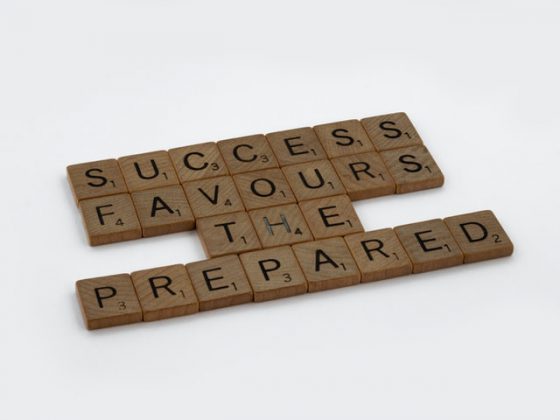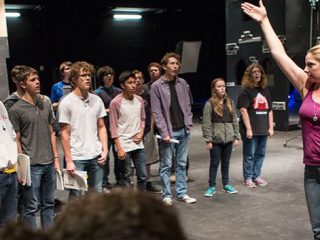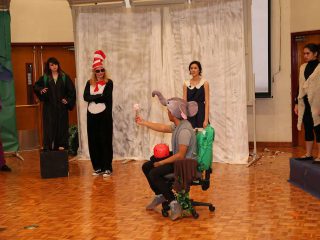There is no doubt that engaging and stimulating younger kids in the rehearsal room is (usually) so much fun, but it can also feel like you’re reverting back to the same old tips and tricks that you have had in your back pocket for years. And if those kids have been with you for several of those years, you may feel like they’re going a little stale! So, whether you are new to working with younger children or you’re just looking for new games and exercises to throw (sometimes literally) out there, here are 10 of our favorites.
You can use them as ice-breakers (great if you have a lot of new faces in your class or rehearsal room), warm-ups (because we ALL need warming-up, no matter our age), or simply as fun activities with which to get silly and let loose!
Throw the sound
Let’s start with warming up those voices (and encouraging the kids to think about projection, even if we don’t call it that just yet). This is also a great exercise for stimulating the brain and encouraging everyone to engage with the group. Plus it can get pretty funny!
Everyone stands in a circle and someone volunteers to go first. They should imagine that they have a ball and say the name of another person in the circle to whom they’re throwing it. However they must choose a style of throwing (e.g. baseball pitch, cricket bowl, rugby pass, volleyball bump….anything!) and then a noise to accompany the movement.
E.g. “Sally…[tennis serve]….ka-ching!”
Encourage them to be as inventive as possible and to use all registers of their voice. Expect their noises to get increasingly daring as the games goes on 😉 If you think they can handle an extra challenge, tell them that no noise or type of throw can be repeated in a round!
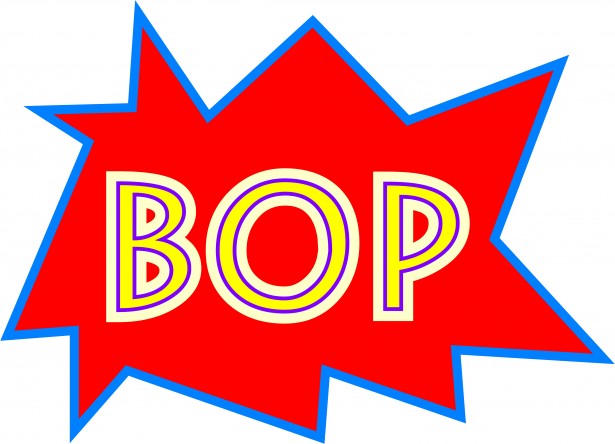
Beanbag projection
Keeping with the voice, this game encourages youngsters to think about how to use their voice in different spaces. They won’t know it yet, but they’re learning to carry their voice all the way to the back of the theatre!
Place 3 bean bags in front of the children at different distances. Depending on the size of the space you’re working in, this might be 10 feet / 20 feet / 30 feet. Taking turns, each person should face the first bean bag and say their name and their favorite color/animal/school subject etc. They then do the same for the second bean bag.
Key Question: Should they speak at the same volume to reach the second beanbag as the first?
Answer: Of course not! The beanbag won’t hear them!
Now ask them to say the same things to the third beanbag. Remind them that they need to make sure the beanbag hears them clearly and precisely.
When everyone has had a turn, reveal that they have actually just addressed the front rows, middle rows, and back rows of a theatre and give everyone a high-five!
Tongue Twisters
Now we’ve looked at projection, it’s important to get their articulation muscles warmed up and ready to roll! There are tons of common tongue twisters around; short, long, funny, tricky, obscure etc. Here are some of our favorites for younger performers. Remember to increase the tempo each time you do them, until everyone explodes in laughter!
- “A proper copper coffee pot”
- “Swan swam over the sea, swim, swan, swim! Swan swam back again, well swum, swan!”
- “How much wood could a wood chuck chuck, if a wood chuck could chuck wood.”
- “Peter Piper picked a peck of pickled peppers, a peck of pickled peppers Peter Piper picked. If Peter Piper picked a peck of pickled peppers, where’s the peck of pickled peppers Peter Piper picked?“
- “Red lorry, yellow lorry.”
- “Smelly shoes and socks shock sisters.”
- “Which wristwatches are Swiss wristwatches?”
- “She sells sea shells on the sea shore.”
Name Alliteration
There are several ways you can use this warm-up, depending on what you want to focus on. But the main aim of the exercise is to get the brain warmed up, while focusing on their range of vocabulary. Taking it in turns, each child should jump to their feet and shout out an adjective that starts with the same letter as their name. E.g. “Astonishing Alex!”
(I apologize now to all the Zach’s, Zoe’s, Quincy’s, Xavier’s etc out there – obviously if you have a room full of these names, this game might have a more limited shelf-life!)
For most, the first few rounds will be easy but they will start to find it trickier as the game moves on. You might want to introduce a timer, to stop them stalling for time! Or maybe ask them to change their tone, volume or emotion on each go.
Move like an animal
Ok, moving on to the body. This is great for younger children as it encourages them to be creative with moving their limbs and have a giggle – I always think that accompanying animal noises should be encouraged! The premise is simple: everyone walks around the room normally until the first animal is called out e.g “Move like an elephant!” They then carry on moving while pretending to be an elephant.
Give them a minute and then switch to another animal while they carry on moving round the room. Be as creative as you want/think the children can handle! I once held a session where we had a whole round of different dinosaur species (as many of them happened to be dinosaur-crazy). They really got into it, although it did get quite detail-specific!
Letting your body lead you
First of all, gather the group into a circle and ask them to start walking (preferably the same way!) As they walk, tell them that you’re going to call out a body part and they have to imagine a string is pulling it along. The best one to start with is the nose as they imagine it being pulled forward. After a minute, tell them to walk normally again, before calling out another body part to lead their movements around the circle. Repeat as many times as you want. If you have slightly older students, you can ask them to tell you how their movements changed with each body part and how that made them feel.
This is a great early exercise to precede commedia dell’arte movement workshops, where several of the stock characters’ movements are led by the exaggerated features on their masks!
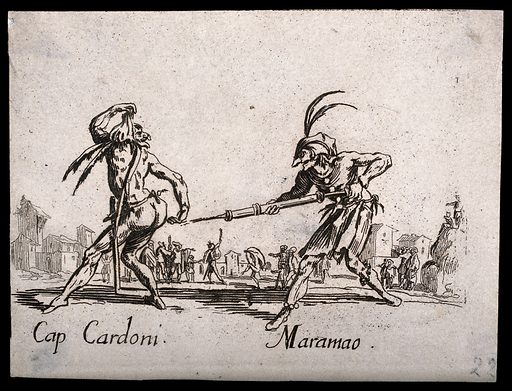
Cooperative stand up
This is a great exercise to encourage communication and working together as a pair. Put the group in partners and ask them to sit on the ground back-to-back. They should then link their arms so they are joined together. On the count of three, they must try to stand up as a unit by pushing their backs together and pushing through their legs.
My grandmother went to the shop and bought a….
Ok, this is a favorite as it usually gets increasingly random and silly! However the objective is to encourage the group to really focus and listen to each other. Everyone sits in the circle and the leader starts the shopping list. “My grandmother went to the shop and bought a…[banana]”. The next person then carries on listing what the previous person said [e.g. banana] and then adds their own item. Round the circle it goes as the list gets longer and longer. When someone can’t remember the list, they’re out! (You might want to put a 10 second timer on to avoid it lasting forever!!)
Wink murder
Another fun game to get kids to focus on the group and observe what’s going on around them. Choose one person to be the detective and send them out of the room / in the corner with their eyes closed. Keep everyone else in a circle and silently choose one person to be the murderer by tapping them on the head. When you are ready, bring the detective back into play. S/he must walk around the circle observing the group. Meanwhile, the murderer must choose their movement to silently ‘kill’ another player by winking at them. You can definitely encourage dramatic deaths from the group! The detective must use their powers of observation to guess who the murderer is before too many of the group are ‘killed’.
There are several variations of this game. For example, you could make the players guests at a party and encourage everyone to walk around the room making small-talk as they are killed off one-by-one by a wink from the murderer.
Sensory improvisation
This is a great exercise to do with younger children as it encourages them to think about and explore all of their senses. Working through the five senses, ask them to pretend to react to the items you call out. Here are a few examples to get you going but let your imagination run wild!
Touch
- Mistletoe
- A hot stove
- A snowball
Taste
- A slice of lemon
- A fizzy sweet
- Mushrooms
Sight
- A giant spider
- A car speeding towards you
- An angry giant
Sound
- A crash of thunder
- A whistle
- Waves crashing on the beach
Smell
- Sizzling hotdogs
- A skunk
- Fresh baked bread
This is just a quick look at 10 of our favorite games and exercises to play with younger kids but there are many, many more. And the best bit? They can all be adapted to suit the needs and size of your class or group. While all of them work on basic techniques and acting skills, don’t forget that the main objective is for everyone to have fun!
For other exercises and games aimed at older groups / adults, check out our blog post on Theatre Games and Warm-Ups.


